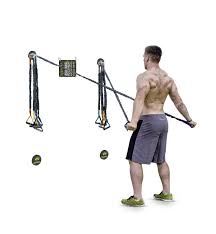






Late Stage – Phase III
Remodel Stage: Up to 3 Months Post-Injury
The process of returning to competition following an injury involves the healing of the injured tissues and the preparation of these tissues for return to function. Length of recovery depends on a variety of factors such as age, lifestyle, degrees of injury, and the structure that has been damaged. The weakened tissue produced during the repair phase is strengthened during the remodeling phase of healing.
Production of collagen fibers has now decreased significantly, allowing the newly formed tissue the opportunity to improve its structure, strength, and function. With increased loading, the collagen fibers of the newly formed scar tissue begin to hypertrophy and align themselves along the lines of stress. The thicker and more optimally aligned collagen fibers become stronger, which allows the injured athletes to return to function.
Although the strength of the collagen fibers improves significantly, the new tissue will never be as strong as the tissue it has replaced. Under optimal healing conditions, the repaired tissue will be approximately 70% as strong as un-injured tissues. Your body does not magically just stop tissue healing at six weeks post-injury. Healing is a continuum. At six weeks post-soft tissue injury your healing tissue is reasonably mature.
As you stretch, strengthen and stress your new tissue, we often find that it is not strong enough to cope with your increasing physical demand. When your body detects that a repaired structure is still weaker than necessary, it will automatically stimulate additional new tissue to help strengthen and support the healing tissue until it meets the demands. However, if your soft tissue is constantly being re-injured by your daily activities, this can last for months. Beyond three months is referred to as the chronic phase.
Management During Repair Phase:
The goal of treatment during the remodeling stage is to focus on rehabilitation of the injured tissues by preparing them to return to normal function or sport-specific actions. This can happen rather flawlessly or require measurement and monitoring. In addition, continued soft tissue therapies, use of modalities, or rehab exercises may still be needed to facilitate functional improvements and limit physical soft tissue stress.
Two main goals to consider when rehabilitating injured soft tissues:
First, healing tissue must not be overstressed or it will re-injure and prolong the healing process. During tissue healing, controlled therapeutic stress is necessary to optimize collagen matrix formation to heal strongly. Too much stress can damage new structures and significantly slow the athlete’s return to competition. This means choosing a level of loading that neither over stresses nor underloads the athlete’s healing tissue.
Second, the athlete must meet specific objectives to progress from one phase to the next. These objectives may depend on a range of motion, strength, or activity. It is the responsibility of the doctor or therapist to establish these guidelines. Measured, progressive exercises will help provide safe and measurable guidelines to make the transition more smooth.
Soft Tissue Therapy
Manual Therapies such as Active Release Technique (ART) treatments, massage therapy, and dry needling all help soft tissues regain flexibility and help decrease the chance of re-injury. This will help the healing tissue regain function and decrease the chance of a flare-up.
They help in two major ways. First, by lengthening the injured tissue that has been shortened due to injury. Second, increased blood flow and oxygen supply help the tissues regain endurance and strength to work towards more normal functionality.
Joint Mobilization
Joint stiffness is a complication associated with both joint and adjacent muscle, tendon and/or ligament injury. Specific joint adjustments can be made to help restore normal range of motion to a stuck segment. Chiropractic adjustments are specific and low force treatments that are very safe and effective in manually restoring a joint to its correct alignment.
